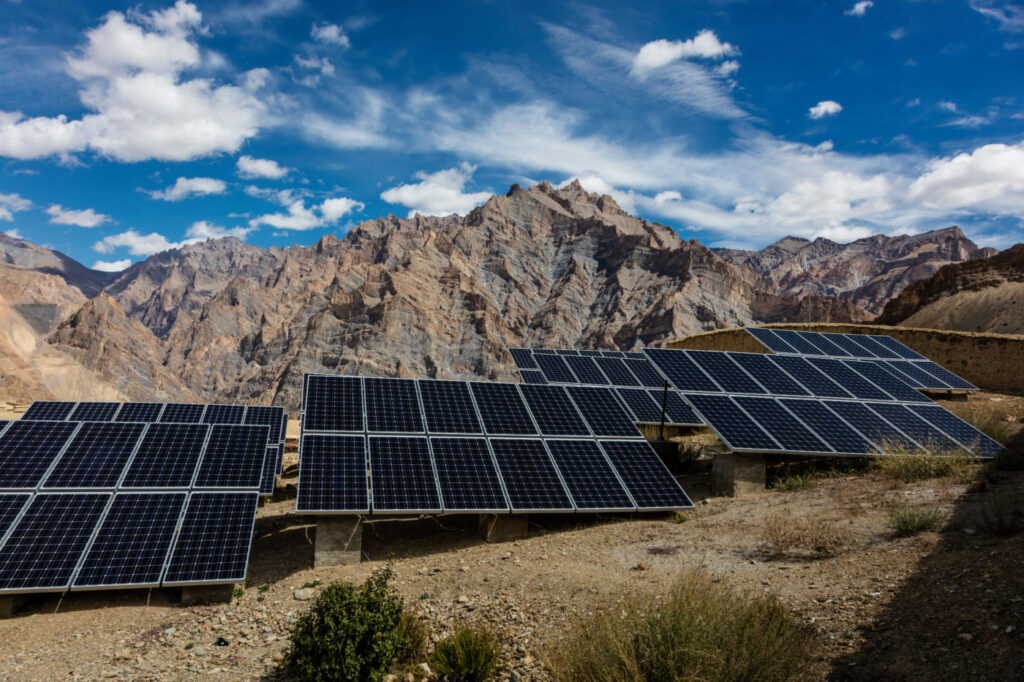India Needs $223 Bn To Meet 2030 Renewable Capacity Goals: Report
Jun 23, 2022 | Pratirodh Bureau
Solar panels in Ladakh, India. The government wants non-fossil fuel power sources to provide half of its electricity supply by 2030 (Image: Craig Lovell/Eagle Visions Photography/Alamy)
India will need USD 223 billion of investment to meet its goal of wind and solar capacity installations by 2030, according to a new report by research company BloombergNEF (BNEF).
The government has set a target of increasing non-fossil power capacity to 500 GW by 2030. It wants non-fossil fuel power sources to provide half of its electricity supply by 2030.
“To achieve this target, India needs to massively scale up funding for renewables,” the report said, adding that USD 223 billion is required over the next eight years just to meet the solar and wind capacity targets.
At COP26 in November 2021, Prime Minister Narendra Modi announced that India plans to reduce emission intensity by more than 45 per cent by 2030 to below 2005 levels. He also announced a net-zero by 2070 target.
The report ‘Financing India’s 2030 Renewables Ambition’, published in association with the Power Foundation of India, found that corporate commitments from Indian companies could help India achieve 86 per cent of its 2030 goals of building 500GW of cumulative non-fossil power generation capacity, a statement issued by BNEF said.
By 2021, 165 GW of zero-carbon generation had already been installed in the country.
Central Electricity Authority forecasts the country’s reliance on coal to drop from 53 per cent of installed capacity in 2021 to 33 per cent in 2030, whereas solar and wind together make up 51 per cent by then, up from 23 per cent in 2021.
Shantanu Jaiswal, lead author of the report and head of India research at BloombergNEF, said: “To date, the growth of renewable energy in India has been funded by a diverse set of financiers. Debt and equity structures have evolved as the market grew and new risks emerged. India’s ambitious renewable energy targets now require further scaling up of financing with new instruments and learnings from other global markets”.
Yet, the scaling up of renewables in India faces regulatory, project and financing risks, with PPA renegotiation, land acquisition and payment delays cited as key risks by industry stakeholders surveyed by BloombergNEF.
In the short-term, rising interest rates, a depreciating rupee and high inflation create challenges for the financing of renewables.
“Scaling up financing to meet 2030 goals requires Independent Power Producers to tap into new or underutilised sources of capital. These could be revolving construction debt, investment infrastructure trusts and funding from retail investors, insurance companies and pension funds. Higher funding requirements also need measures that can increase the availability of financing, such as de-risking renewable projects to offering contractual terms that provide greater comfort to investors,” Rohit Gadre, an analyst in BNEF’s India research team, commented.
